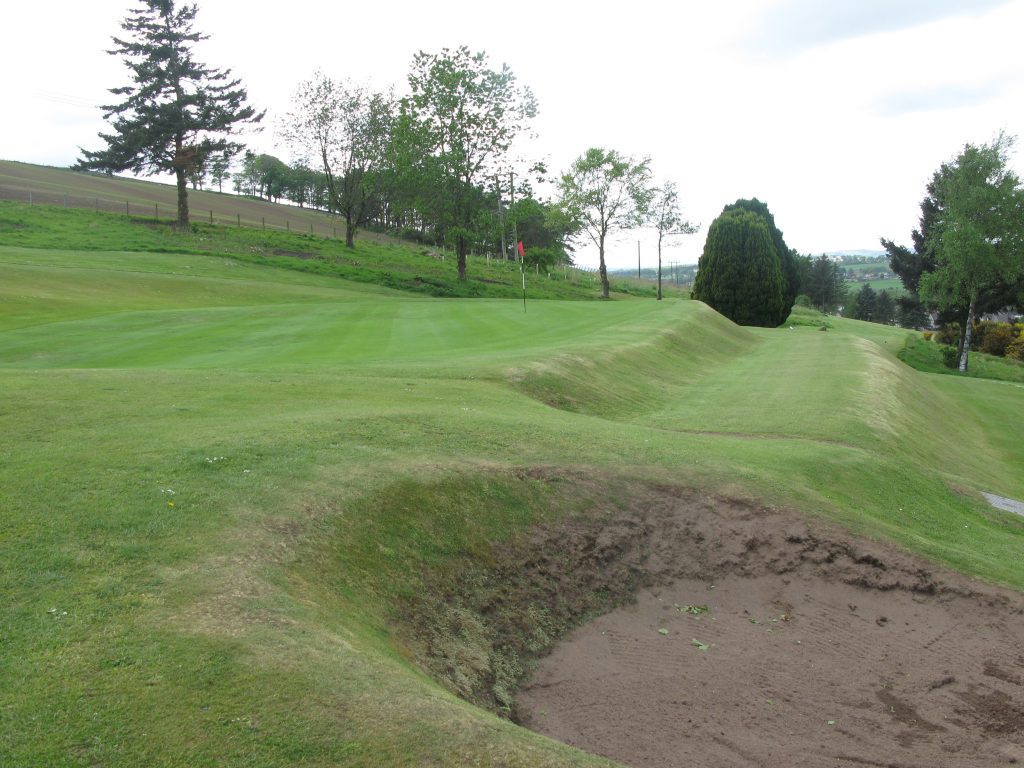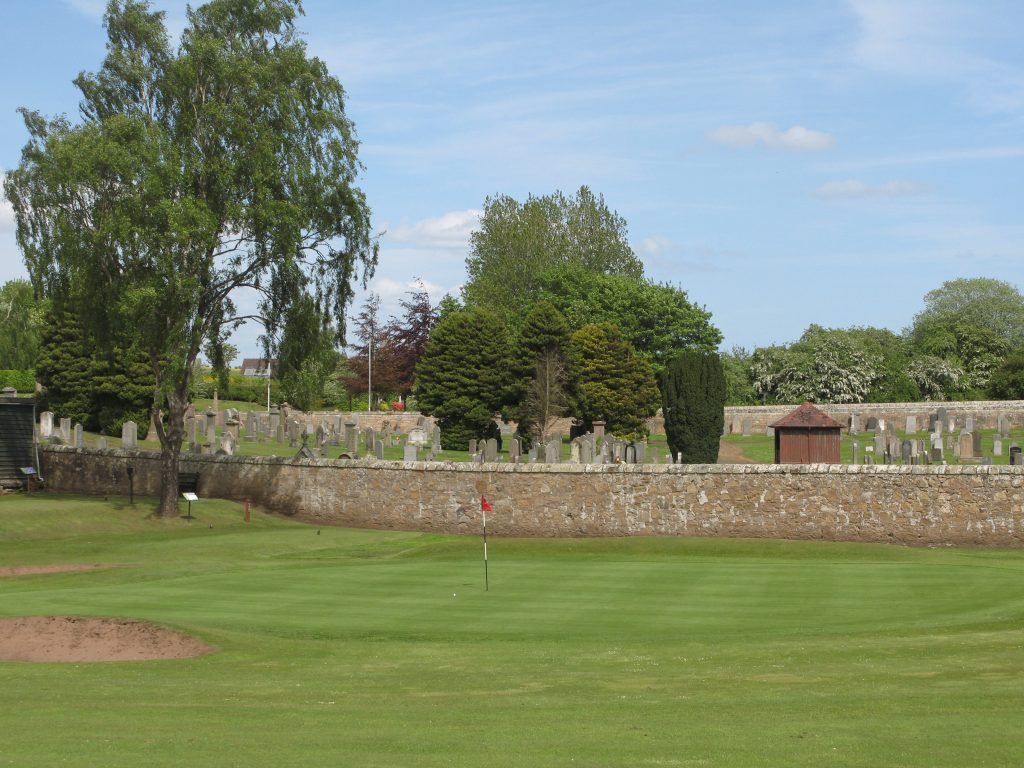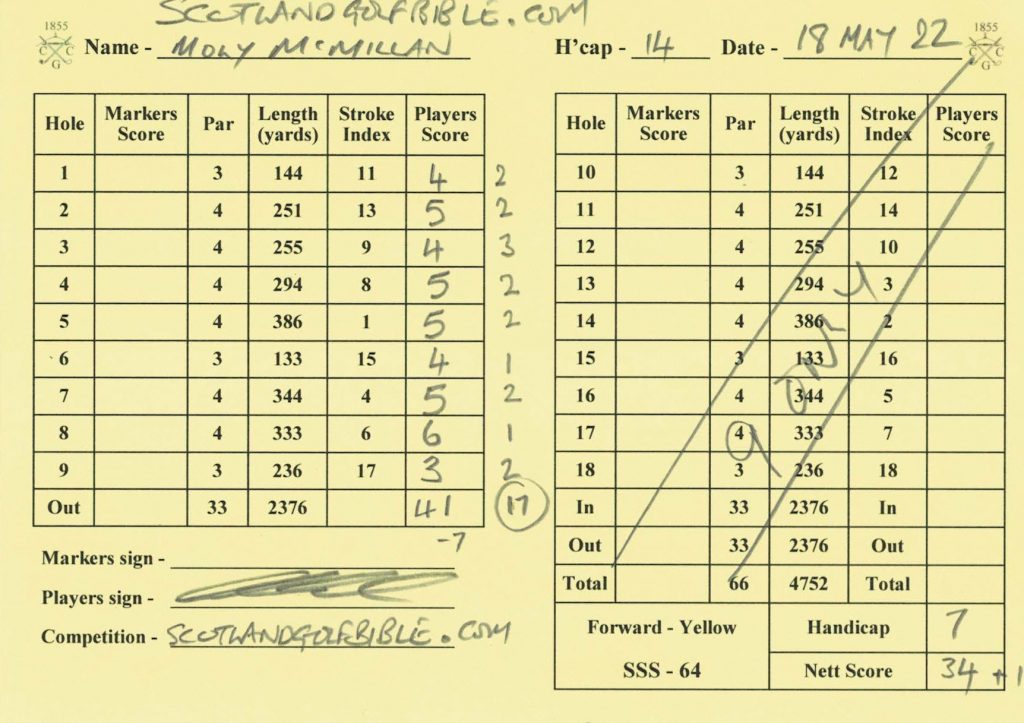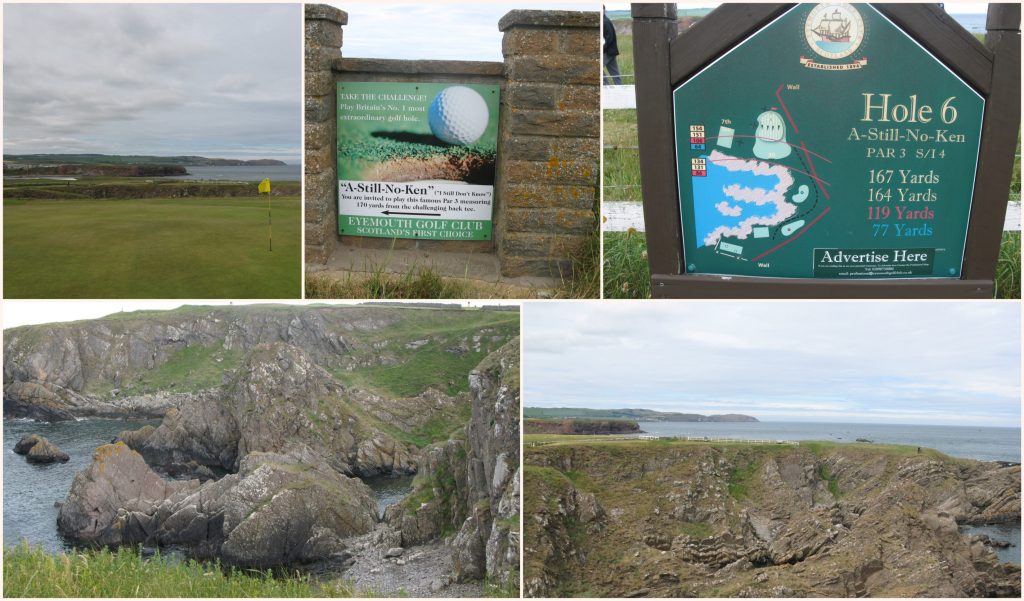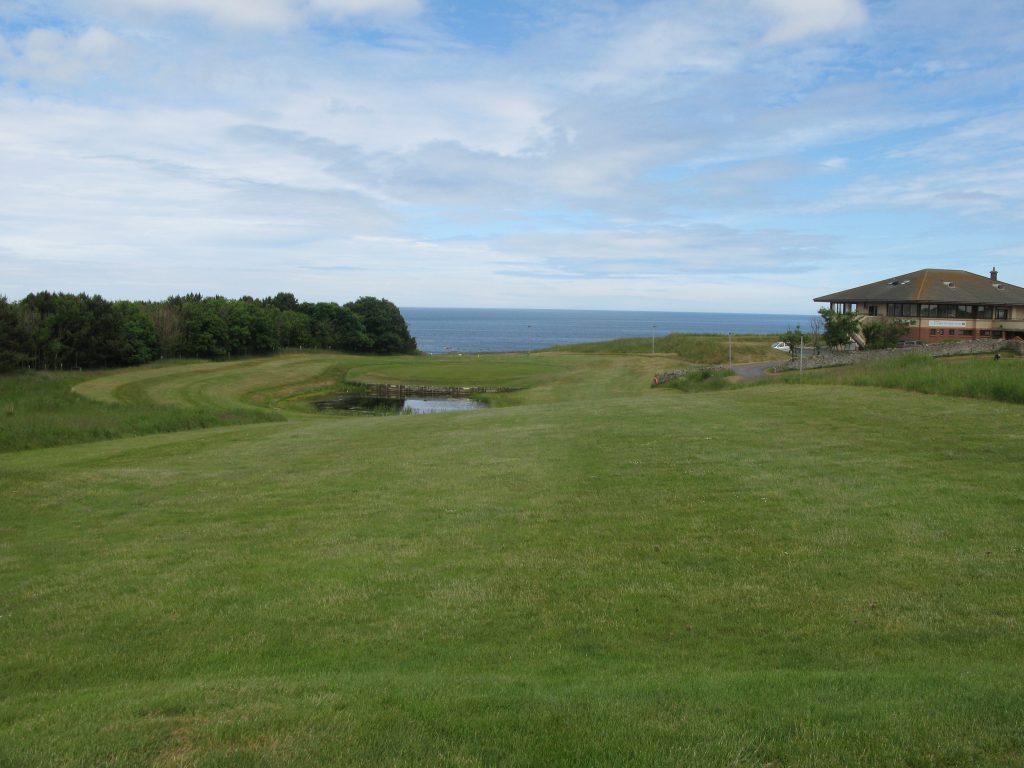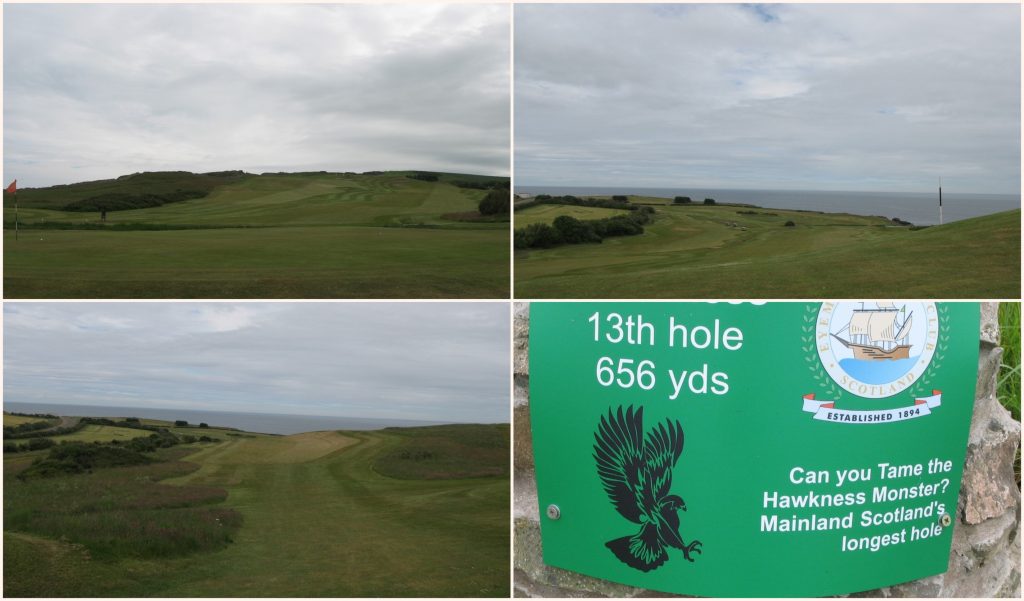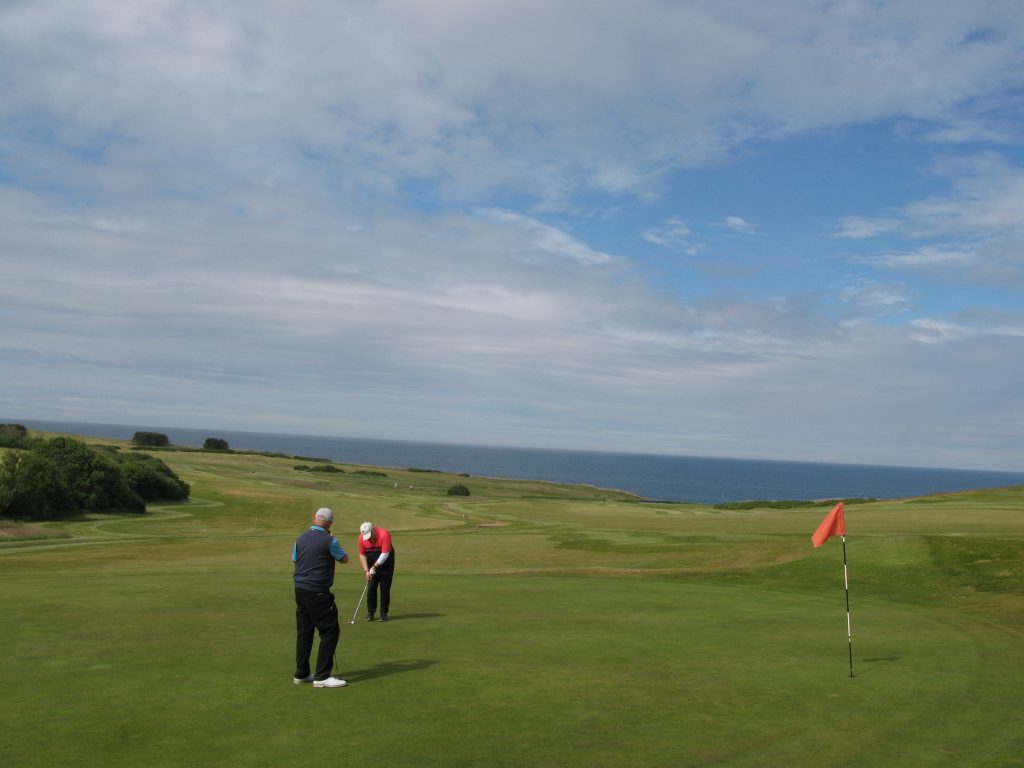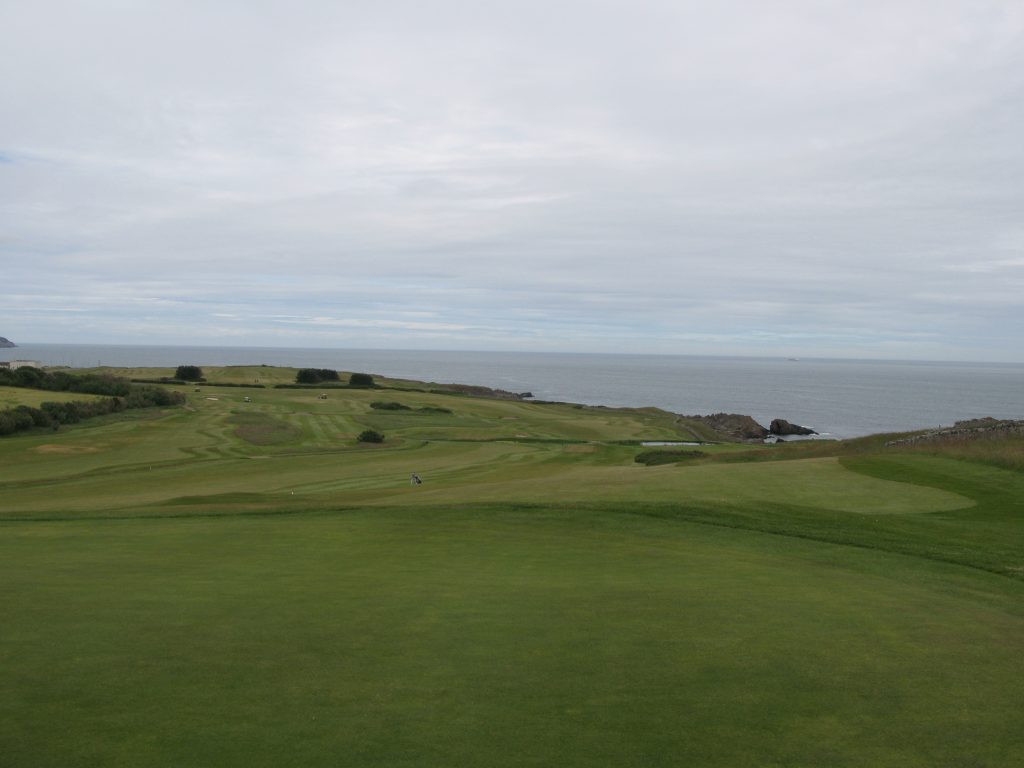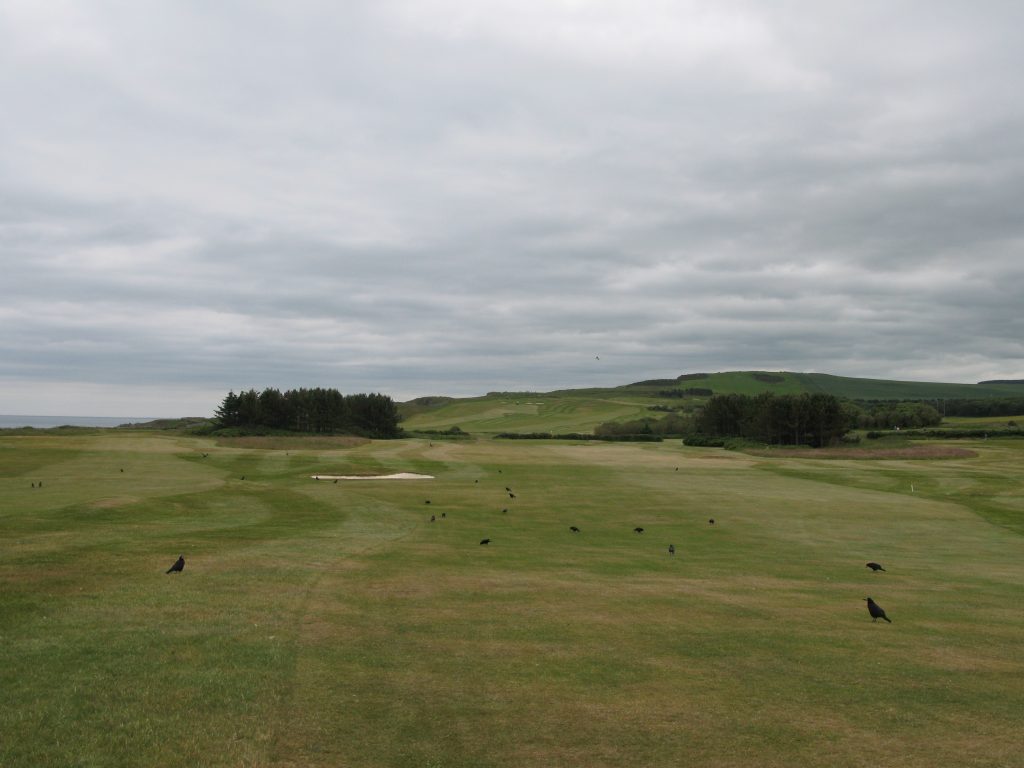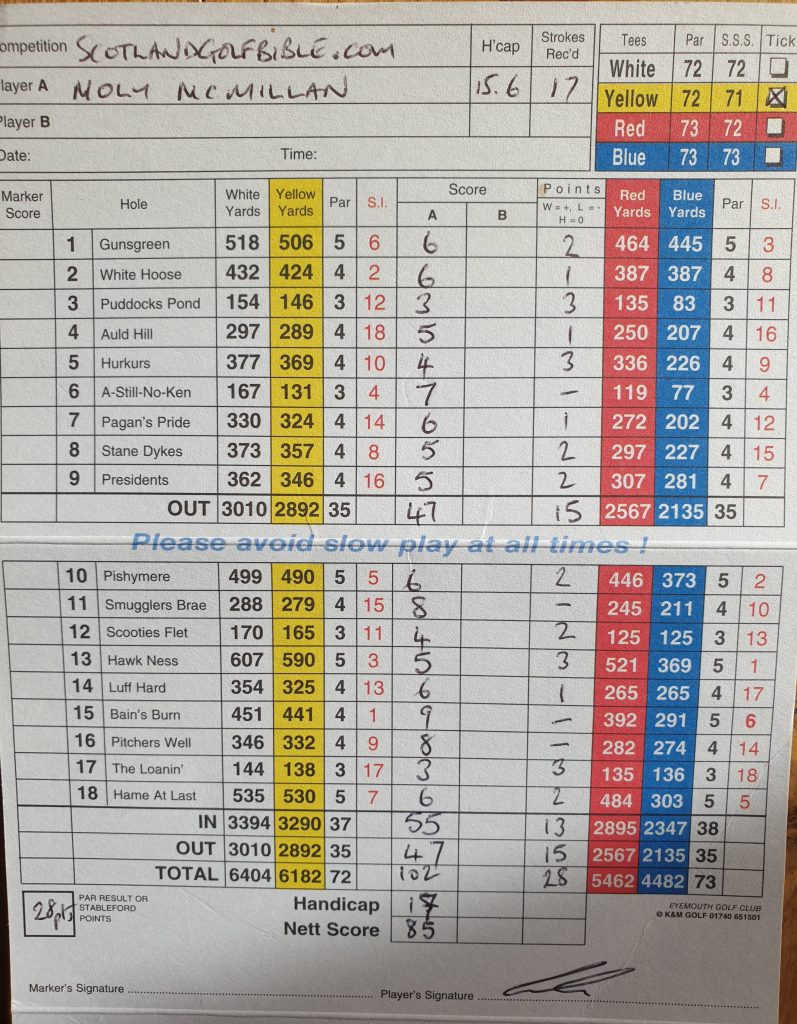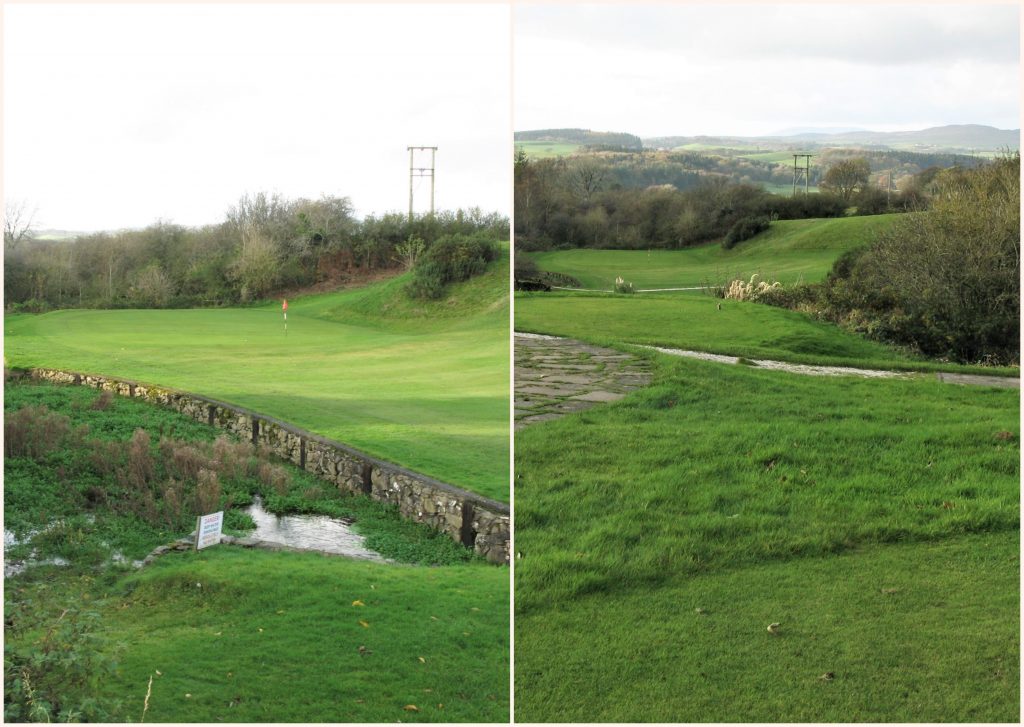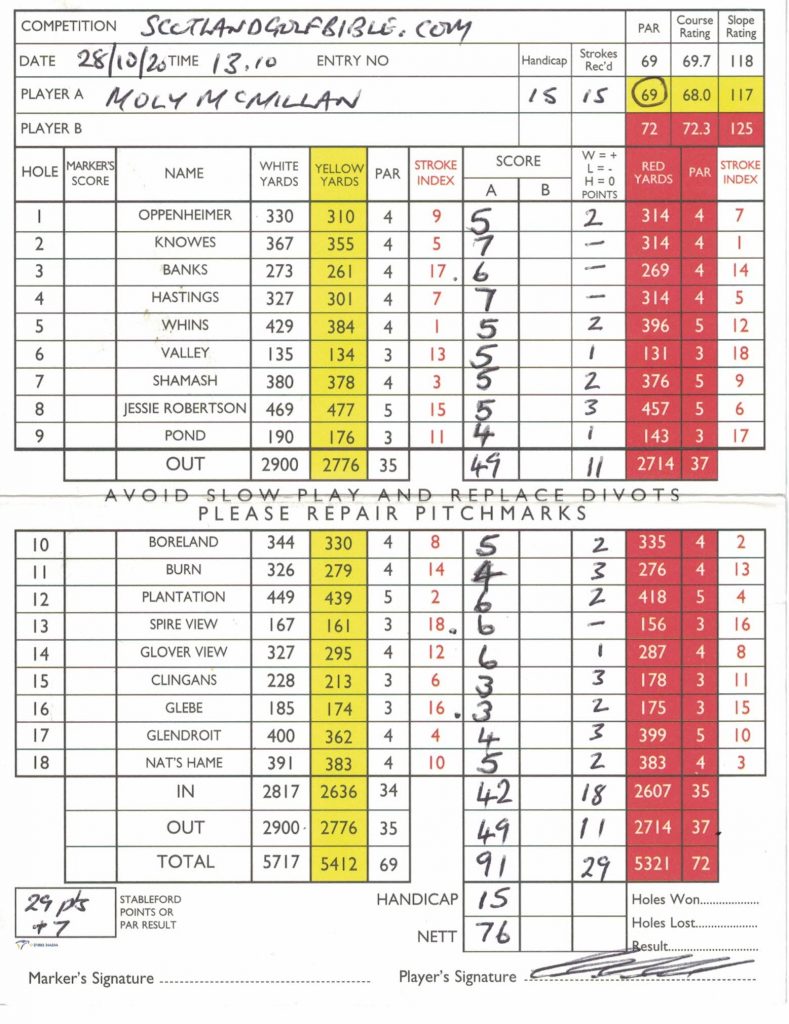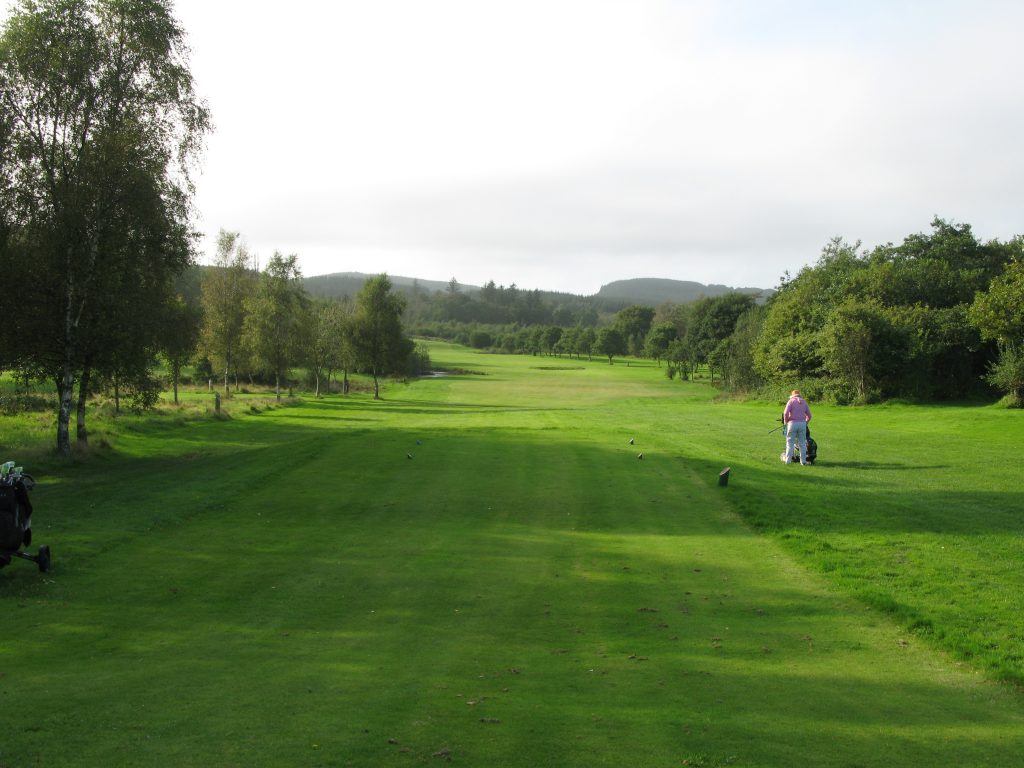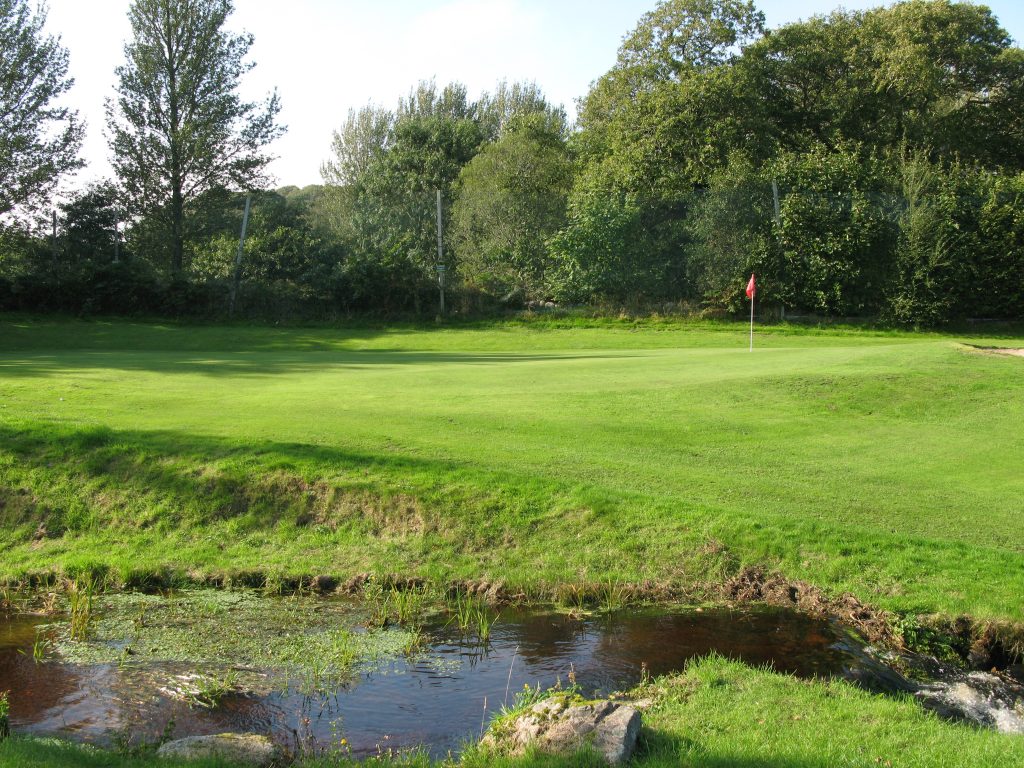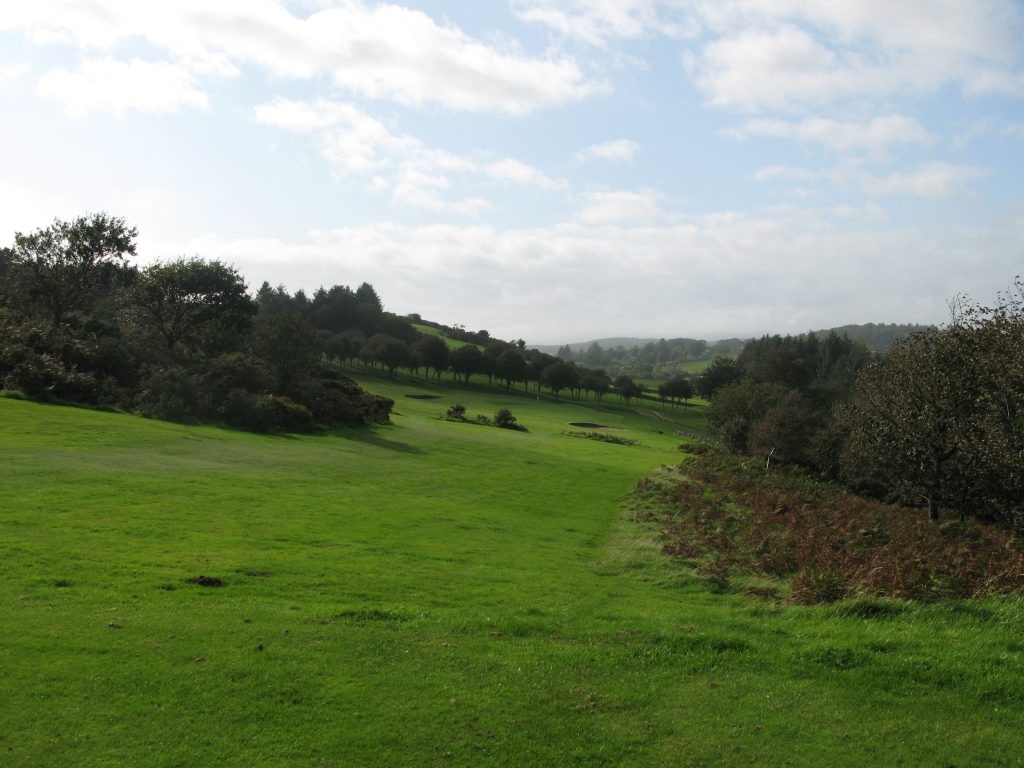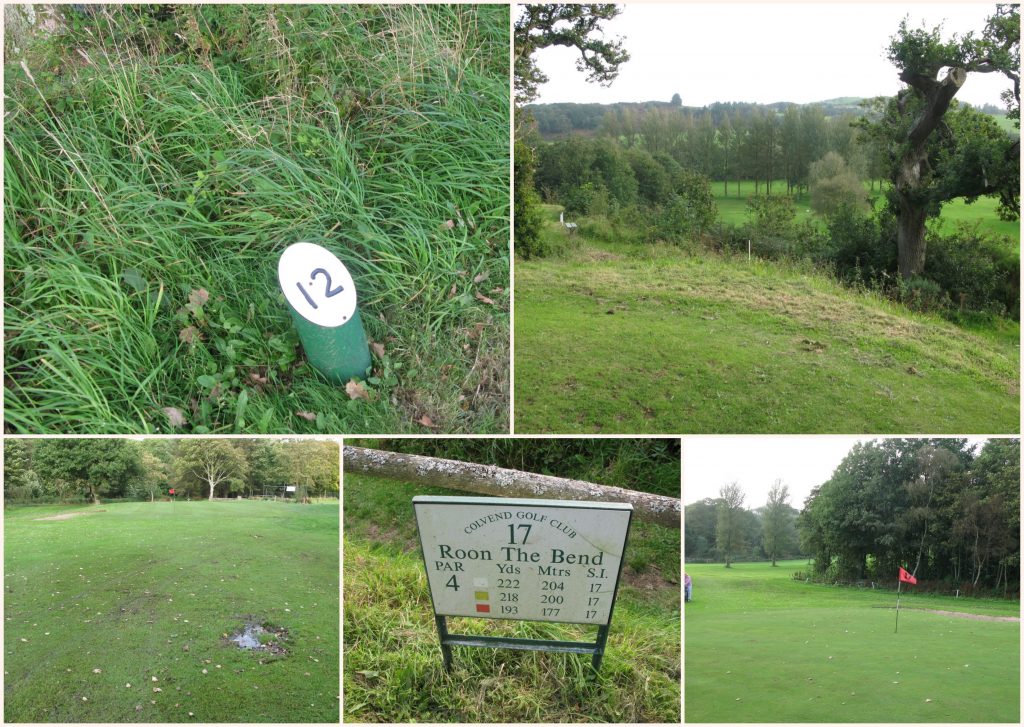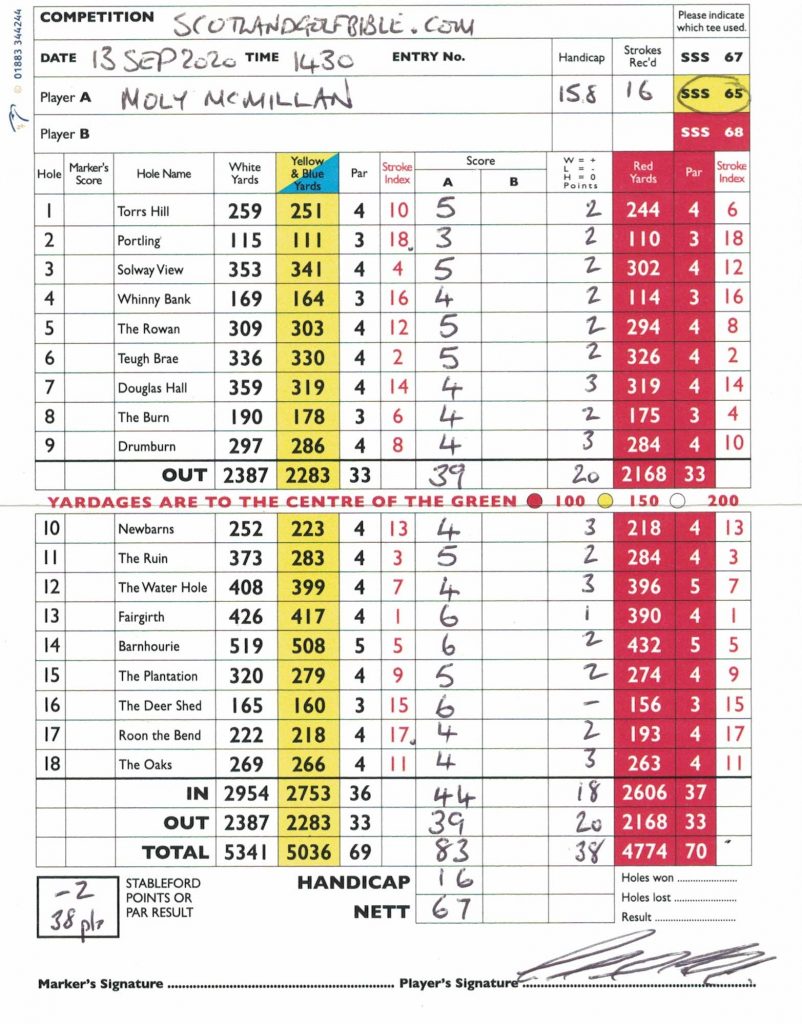Don’t get confused by historic rhetoric – you play the course, not the ‘club’.
Round £16. Par 33. Course Rating / Slope Rating (yellow) 31.9/114. Value (out of 5) – 3.5
Cupar is a quaint 9 hole course in the town of the same name, only 10 miles to the west of St Andrews.
The web site and a sign at the first hole declare you’re playing at “the oldest 9 hole golf club in the world”. Dig just a little under the surface and you realise this is just a trifle disingenuous.
Firstly, you play on a golf course, not on a golf club. So whilst Cupar Golf Club was founded in 1855, it was at a 6 hole course (note not 9) some distance from the current location, which is in the Hilltarvit area of Cupar.
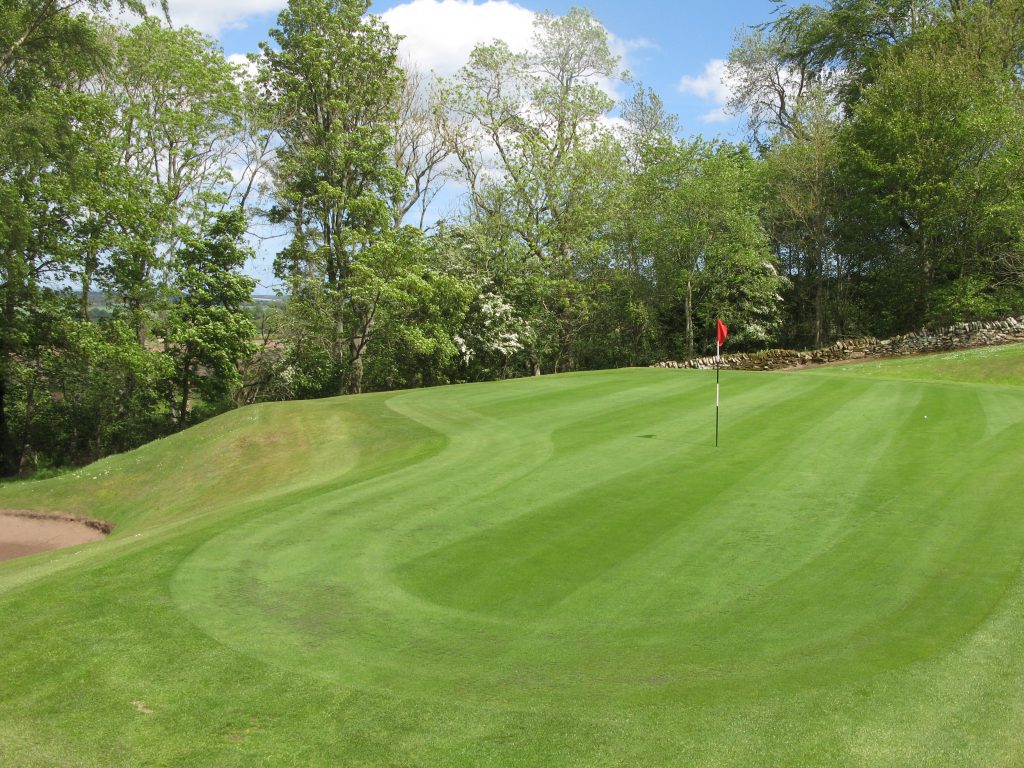
After an interesting first 40 years of existence, during which the Cupar Golf Club located and played at Ladybank golf course, this current 9 hole layout which plays across the slope of Tarvit Hill was laid out in 1896, after a few years of a more “up and down” layout.
Do some research and you uncover there are a number of 9 hole courses still in play from the early 1890s, with nearby Anstruther (click for my blog), being a good example.
Set aside the longevity, and you do have a delightful little fun course to play, along with its nice wooden clubhouse.
The course was in pretty good condition, although the greens were soft in places and many pitch marks had not been repaired, which was a shame.
Although set on a hill, with great views over the town and surrounding countryside, many of the holes played across the slopes so it was a much easier walk that we had envisioned.
I played very well, in blustery conditions, for a 41, 7 over, which was about to handicap for the 9 holes. I drove to 4 feet at the last (see photo above) but missed my birdie putt.
It’s well worth playing Cupar, but don’t buy any of the “oldest” stuff, is my steer. But don’t take my word for it – check out the nice history overview on the web site here and make your own mind up.
Cupar GC allow bookings direct on their BRS system, where I got a decent discount and paid only £13 for 9 holes. Good value.
Lastly, don’t put Hill of Tarvit into your sat nav, as you’ll end up a few miles south at Kingarrock Hickory golf course, another place well worth a visit.
Course Type: Parkland
Par 33 (0 par 5s, 6 par 4s, 3 par 3s)
Distance: 2376 (white)
Moly’s Gross score: 41


